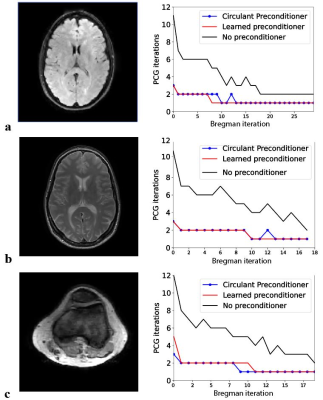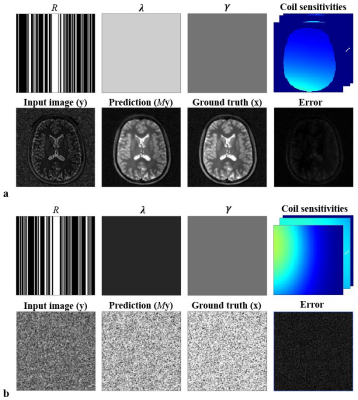Kirsten Koolstra1 and Rob Remis2
1Division of Image Processing, Leiden University Medical Center, Leiden, Netherlands, 2Circuits and Systems, Delft University of Technology, Delft, Netherlands
1Division of Image Processing, Leiden University Medical Center, Leiden, Netherlands, 2Circuits and Systems, Delft University of Technology, Delft, Netherlands
In this work we design a preconditioner for compressed sensing reconstructions using a neural network. Results show that it is possible for a learned preconditioner to improve upon the performance of existing preconditioning techniques.

Fig.2. Comparison of CG convergence with and without the learned and the circulant preconditioner. (a) Flair brain scan (128x128). The learned preconditioner reduces the number of iterations in CG by a factor 2.9. This is a slightly larger reduction compared to the factor of 2.7 obtained with the circulant preconditioner. (b) Similar results are obtained for a TSE scan with a twice as large matrix size compared to that in the training set. (c) The speed up is slightly lower in the knee (128x128), which is an anatomy that the network has not observed during training.

Fig.1. The network’s input and output for two training examples. Each 37-channel input contains a sampling mask (R), regularization masks (λ and γ), 16 complex coil sensitivity maps and a complex image (y). Note that the complex channels are first split into real and imaginary components. The network’s prediction My is close to the ground truth, which is confirmed by the small error values both for the brain case (a) and for the noise case (b) (normalized norm < 0.16).